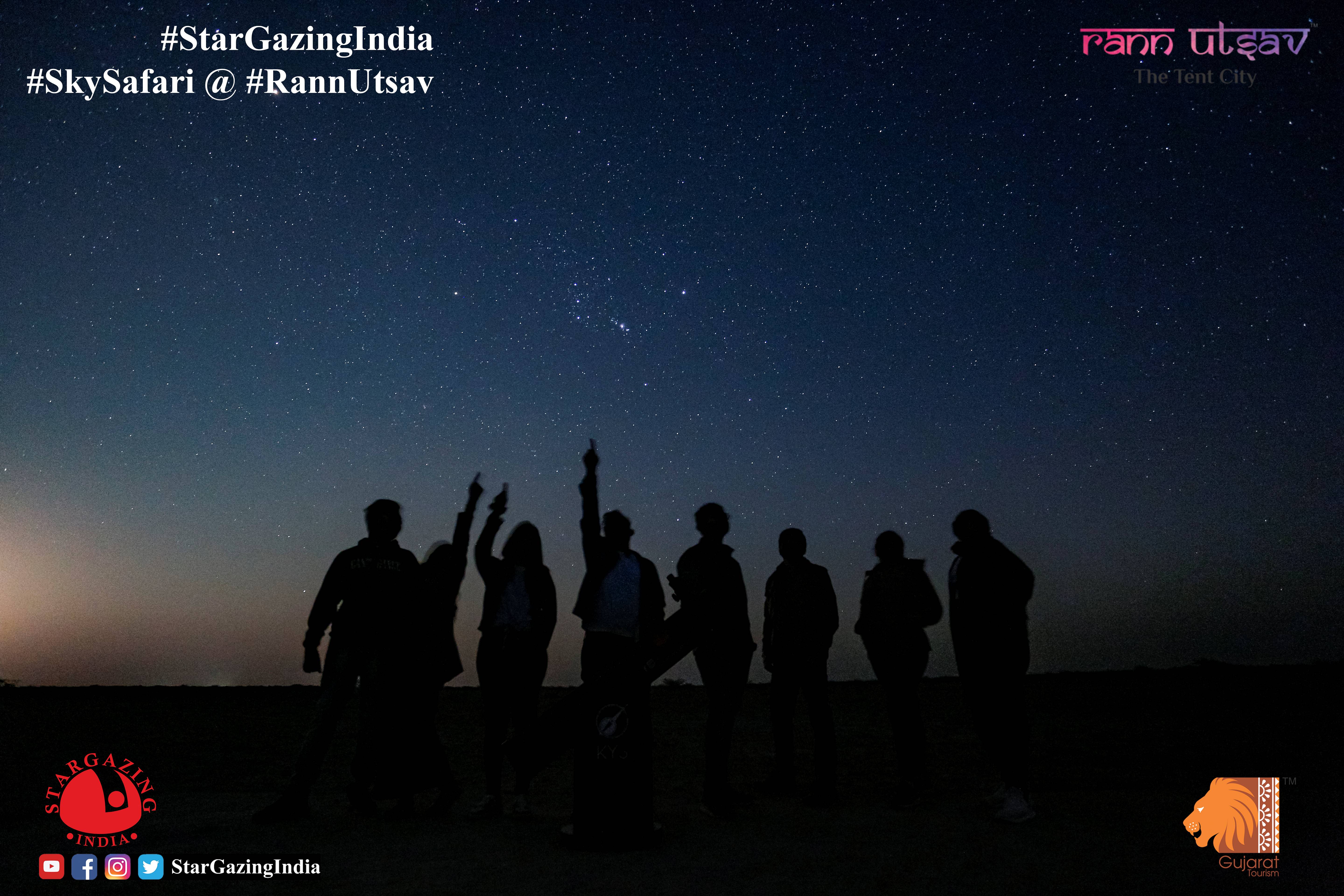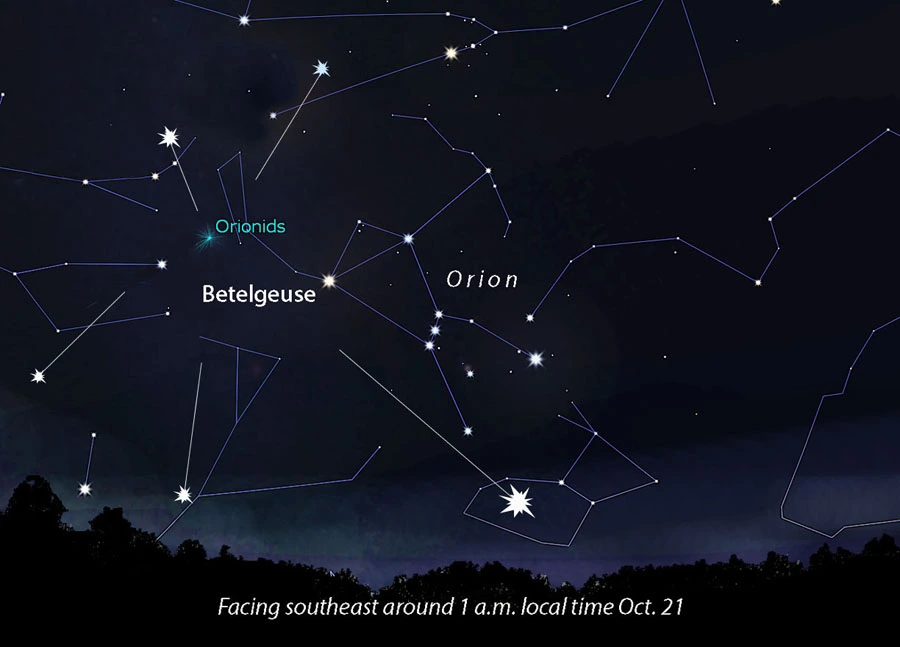Night Sky Guide
See Debris from Halley's Comet Light Up the Sky: The 2025 Orionid Meteor Shower
Published on October 20, 2025 by Mr. Nishant Gor

1.0 Introduction: A Natural Fireworks Display
As festivals like Diwali approach, so do debates about the noise and pollution from traditional fireworks. But what if you could witness a spectacular, silent, and all-natural fireworks display, completely free of charge and pollution? This month, the cosmos is offering just that.
Get ready for the Orionid meteor shower, a celestial firework display painted across the night sky. This year, the viewing conditions are absolutely perfect, promising an unforgettable show. This article covers the most fascinating facts you need to know to enjoy this cosmic legacy.

2.0 Takeaway 1: You're Watching the Legacy of Halley's Comet
These "Shooting Stars" Are Crumbs from a Famous Comet.
The Orionid meteor shower isn't caused by stars at all. It's the direct result of Earth passing through a trail of cosmic dust left behind by the most famous comet in history: Halley's Comet.
According to Nishant Gor of Stargazing India, every 76 years, Halley's Comet swings by the sun. The intense solar heat vaporizes the ice and dust on the comet's surface, leaving a long stream of debris in its orbital path. Earth's own orbit crosses this stream twice a year. The crossing in October is what creates the brilliant Orionid meteor shower we get to see.
3.0 Takeaway 2: Tiny Dust Specks Create an Incredible Spectacle
Sand Grains Traveling at 136,000 MPH Light Up the Sky.
It’s hard to believe, but the brilliant streaks of light you'll see are created by particles that are typically no bigger than a grain of sand—often less than a millimeter in size. What they lack in size, they make up for in speed.
These tiny dust fragments slam into Earth's atmosphere at an incredible velocity of approximately 61 kilometers per second, which is about 219,600 km/h or a staggering 136,000 mph. At that speed, friction with the air causes them to instantly vaporize in a bright, fleeting flash of light. Occasionally, a slightly larger fragment, perhaps the size of a pea, can create a spectacular and intensely bright "fireball."
4.0 Takeaway 3: You're Witnessing an Ancient Celestial Tradition
This Isn't a New Phenomenon—It's an Ancient One.
When you watch the Orionids, you are connecting with a long and storied history of human sky-watching. The stream of debris that causes the shower is itself ancient, estimated to be around 23,000 years old.
The earliest confirmed observations of the Orionids date back to Chinese and Japanese records from around 585 AD. One remarkable historical account noted that:
"...in that year 'hundreds of meteors spread in all directions.'"
Even in recent history, the shower has shown its variable nature. From 2006 to 2009, sky-watchers were treated to a surge in activity, with 40 to 70 meteors recorded per hour.
5.0 How to Watch and Photograph the 2025 Orionids
Your Guide to Seeing the Show.
This year provides a prime opportunity. Here’s how to make the most of it.
Viewing Tips:
- Best Time: The peak occurs on the night of October 20-21. For the absolute best show, find a dark spot and start watching from 2 AM onwards in the very early morning of October 21.
- Why This Year is Special: The moon will be near its new phase, making it almost invisible. This means the sky will be exceptionally dark, offering ideal viewing conditions without any moonlight to wash out the fainter meteors.
- Where to Look: Find a dark location far from city and street lights. After 1 AM, look towards the south-east sky for the constellation Orion (the Hunter). The meteors will appear to radiate from a point near the bright red star Betelgeuse, but for the best experience, look around this area rather than directly at it.
- What to Expect: From a truly dark site, you can expect to see up to 20 meteors per hour. Be patient—it takes at least an hour for your eyes to fully adjust to the darkness and see the most meteors.
Photography Tips (for beginners):
- Essential Gear: You’ll need a digital camera with a wide-angle lens or a good mobile phone camera. A sturdy tripod is crucial to keep your camera steady.
- Camera Settings:
- Aperture: Set your lens to its widest possible setting (e.g., f/2 or f/2.8) to let in the most light.
- ISO: Use a high ISO setting, such as 1600 or 3200.
- Exposure: Set your shutter speed for a long exposure, between 15 and 30 seconds.
- Framing Your Shot: Don't center the radiant (the area near Orion) in your frame. Instead, position it to one side. This technique helps you capture both the short, quick meteor trails that appear near the radiant and the long, dramatic ones that streak across other parts of the sky.
6.0 Conclusion: A Fleeting Connection to the Cosmos
The Orionid meteor shower is far more than just a beautiful light show. It's a tangible link to a legendary comet, a chance to witness an astronomical event recorded for centuries, and a reminder of the vast and dynamic mechanics of our solar system.
As you watch the fiery trails of dust from a comet that visits us only once in a lifetime, what does it make you wonder about our own fleeting place in the universe?